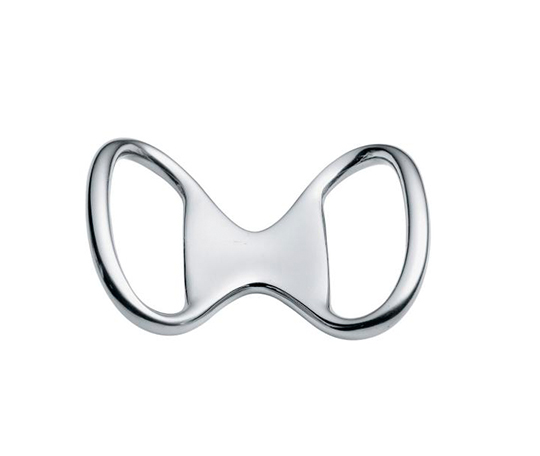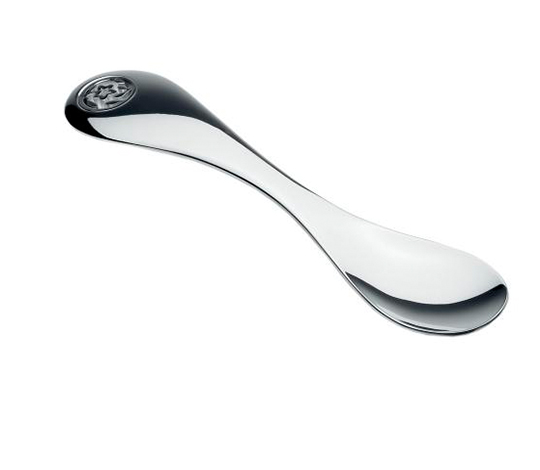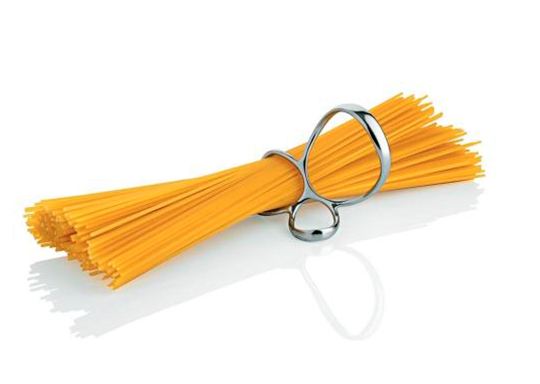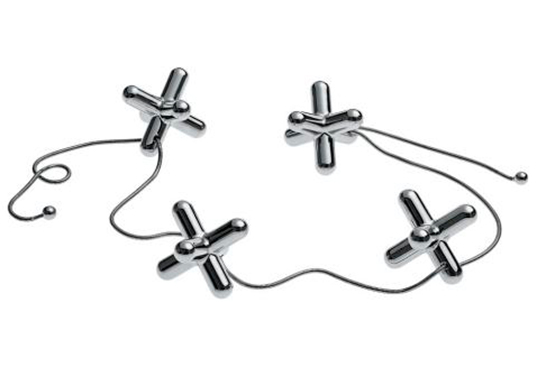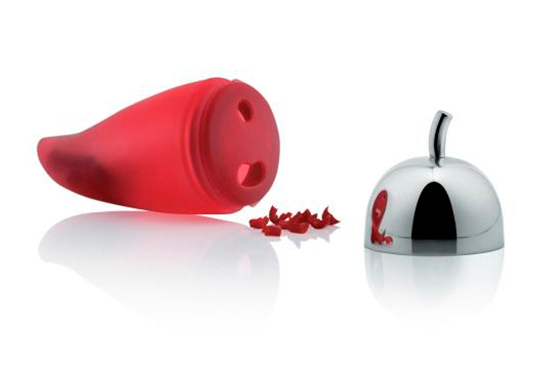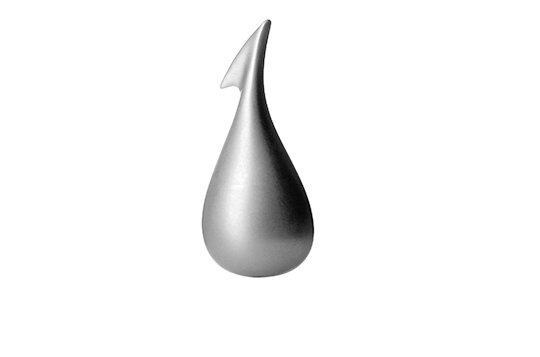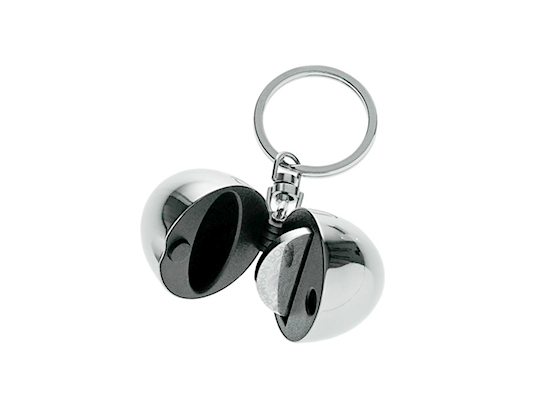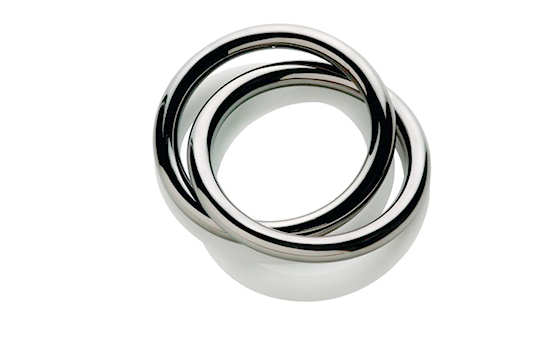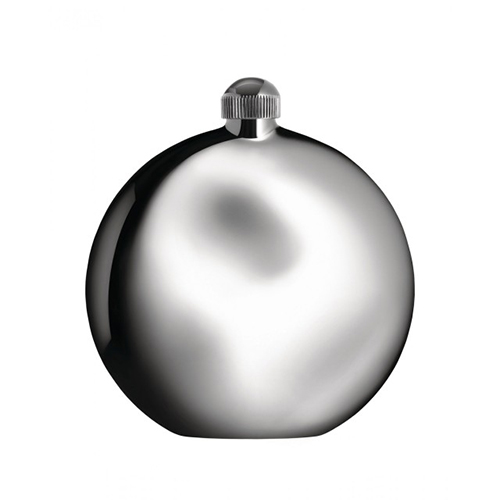Collections
Objets Bijoux
How can we translate those small actions of everyday domestic life into objects of evocative and noble design, much like a piece of jewellery? Small functional objects, designed as jewellery, to be worn or carried. Intriguing items precisely because of their dual nature: instrumental and decorative at the same time. This concept led to the workshop in 2004 and the first “Objet Bijoux” collection.
As part of this new project I wanted to work on what one might call one of Alessi’s original matrices: the manufacture of metals. In the 1990s we had delved into a vast range of highly diverse design areas, experimenting with equally unusual materials for this company. Our “Objet Bijoux” research returned to the innermost core of Alessi’s production identity, namely its ability, from the word go, to produce state-of-the-art metalworking.
Steven Blaess, Francesca Amfitheatrof and Jim Hannon-Tan were the first designers with whom I worked on this project. With Steven Blaess, our starting point was that widespread Australian habit of drinking a soft drink or beer with friends in a casual setting, wherever you happen to be, whether at the beach, on the street, etc. The idea of creating an easily portable bottle opener arose from a small daily gesture – the uncorking a bottle in an informal setting; it was designed as an elegant steel buckle that could be used as an accessory to adorn a belt, to fix a silk scarf or as a pocket key-ring. With Francesca Amfitheatrof we turned out attention to a particular everyday problem: the need to have a coin or token for the supermarket trolley ready to hand. We solved this with the “BON BON” key-ring, where the pendant has a small coin compartment concealed within its soft evocative shape. The project developed with Jim Hannon-Tan, on the other hand, was the outcome of a workshop on “Design Ethics”, inspired by the natural world: starting from the maple seed pod, we created a nutcracker whose design is reminiscent of a small heart.
Over the years, other workshops organised by my studio with other designers have enriched the “Objet Bijoux” collection with a variety of objects, though all sharing some common elements and concepts. First of all, our iconic memory: leaves, hearts, ruffles, droplets, sweets… all the “Objet Bijoux” shapes refer to an archetypal, instantly recognisable icon that resonates in our shared memory. The second aspect is intertwined with the first: since these objects have an evocative shape, their function is often not immediately recognisable; it is hard to grasp at first glance that these organic, natural shapes – linked to our deepest memories – are actually bottle openers, spaghetti-measures, nutcrackers, orange peelers… Another element common to all the items resulting from this research is the tactile dimension: they all have organic, smooth, solid forms that are comfortable to hold and fiddle with. Moreover, they are shiny and reflect light, making them precious and attractive.
Small, elegant and just a little bit mysterious, the “Objet Bijoux” project provides one of the most successful examples of the infinite possibilities of design and shape. Innovative objects that solve practical problems whilst using evocative forms in a totally new and unexpected manner.
Come tradurre le piccole azioni della vita domestica in oggetti dal disegno evocativo e prezioso come quello di un gioiello? Piccoli oggetti funzionali disegnati come monili da indossare o portare con sé, intriganti proprio per questa duplice natura: strumentale e ornamentale al tempo stesso. Da questa suggestione nacque nel 2004 il workshop che portò alla prima collezione degli “Objet Bijoux”.
Con questa nuova ricerca desideravo tornare a lavorare con Alessi su quella che potremmo definire una delle sue matrici originarie: la manifattura dei metalli. Negli anni ’90 avevamo spaziato in ambiti progettuali molto diversi, sperimentando materiali altrettanto inediti per l’azienda. La ricerca sugli “Objet Bijoux” tornava al nucleo profondo dell’identità produttiva di Alessi, al suo essere stata fin dalla fondazione espressione dello stato dell’arte nella lavorazione dei metalli.
Steven Blaess, Francesca Amfitheatrof e Jim Hannon-Tan sono stati i primi designer con i quali ho lavorato a questa ricerca. Con Steven Blaess siamo partiti da un’abitudine australiana molto diffusa, quella di bere una bibita o una birra con amici in modo informale, ovunque ci si trovi, in spiaggia, per strada… Da un piccolo gesto quotidiano – lo stappare una bottiglia in situazioni informali – l’idea di un apribottiglie da portare sempre con sé, disegnato come un’elegante fibbia in acciaio da usare, al tempo stesso, come accessorio per ornare la cintura o fermare un foulard intorno al collo, oppure come portachiavi da tenere in tasca. Con Francesca Amfitheatrof abbiamo invece lavorato su un piccolo problema della vita di tutti i giorni: l’esigenza di tenere sempre a disposizione una moneta o un gettone per il carrello del supermercato. Esigenza che abbiamo risolto con “BON BON”, un portachiavi il cui ciondolo dalla morbida forma evocativa nasconde all’interno un piccolo vano per la moneta. Il progetto con Jim Hannon-Tan è nato all’interno di un workshop dedicato alla “Etica del design”, da un’ispirazione proveniente dal mondo naturale: partendo dalla forma del baccello che racchiude i semi dell’acero, abbiamo creato un aprinoci il cui disegno ricorda al tempo stesso quello di un piccolo cuore.
Negli anni, nuovi workshop organizzati nel mio studio con altri progettisti hanno arricchito la collezione di oggetti molto diversi, sebbene legati da una serie di elementi e suggestioni comuni. Innanzi tutto, il lavoro sulla memoria iconica. Foglie, cuori, gale, gocce, dolci… le forme degli “Objet Bijoux” rimandano a icone archetipe, immediatamente riconoscibili e risonanti nella memoria delle persone. Legato a questo aspetto ve ne è un secondo: proprio perché questi oggetti hanno forme evocative, la loro funzione spesso non è subito riconoscibile. Difficile cogliere a un primo sguardo che queste forme organiche, naturali e connesse a memorie sedimentate sono apribottiglie, dosaspaghetti, aprinoci, sbuccia arance… Un altro elemento comune a tutti i pezzi nati da questa ricerca riguarda la dimensione tattile: gli oggetti hanno forme organiche, lisce, piene, piacevoli da tenere in mano e giocherellare tra le dita. E ancora, forme lucide, riflettenti e per questo preziose e attraenti.
Piccoli, eleganti e un po’ misteriosi, gli “Objet Bijoux” rappresentano uno dei casi più riusciti delle infinite possibilità che il design apre sul piano formale. Oggetti innovativi perché capaci di risolvere un problema funzionale usando forme evocative in modo del tutto inedito e inaspettato.



